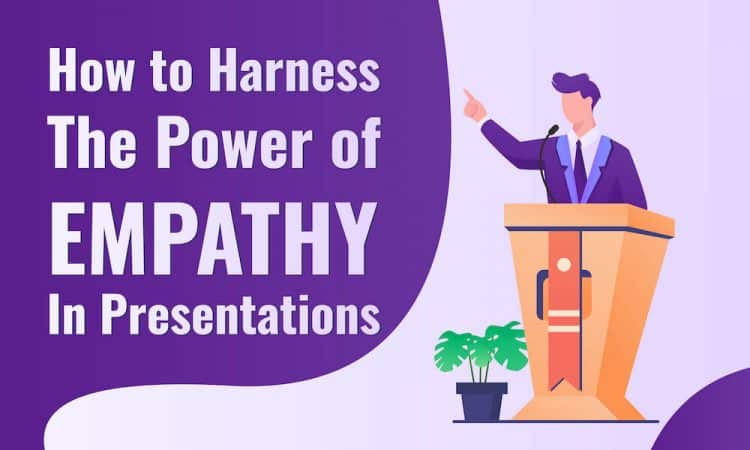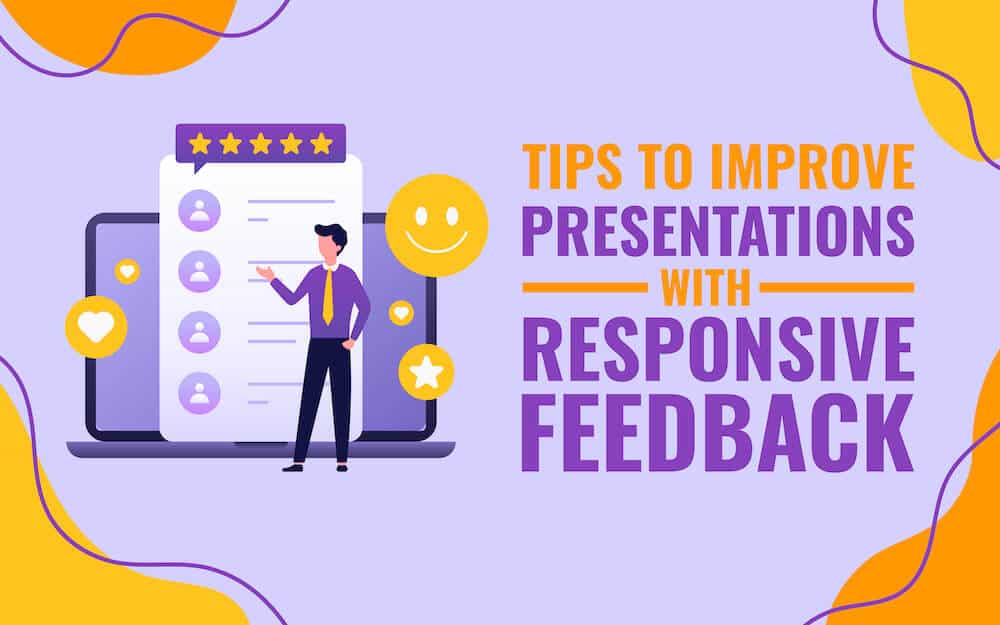
We are part of a hypercharged world now. Meaning?
People listen less, and views are expressed more adamantly. How do we reach a common ground or get people to be more accepting of differing opinions and outcomes?
Empathy is one trait that never fails to forge connection and trust between people. And why is that? Because you try to understand people and their feelings, making them trust you.
When presenting, building a connection with your audience is one of the foremost things you want to achieve (in the first few minutes only).
Everyone speaks about delivering a presentation with authenticity and sincerity, but how do you actually do that? How do you translate this abstract concept into a tangible delivery during your presentation?
Let’s figure it out!
What is Empathy in Presentations?
“Nobody cares how much you know until they know how much you care.” – Theodore Roosevelt
Empathy is your ability to respond (with appropriate emotions) and understand people’s perspective, something a lot more than just being nice. It means viewing things from the people’s perspective.
You are conscious and compassionate about the intellectual and emotional states of people. It is forming a bridge to the other side and being inclusive in your thoughts and feelings.
Positive emotions help in building positive brand associations.
The soft skill will allow you to tap into people’s emotions and show them how you can make a difference. They will listen to you attentively and be able to relate better to what you offer.
Tips on How to Use Empathy to Build Connections
The following strategies will help you strengthen an empathetic relationship with your audience, which in turn will assure them that you genuinely care about their emotions and needs.
1. Convey Empathy with Your Body Language
Just like verbal communication, your body can demonstrate empathy, too. A positive body language will help you forge the vital connection. When you speak to people, keep your hands open and lean a little bit towards them.
Always maintain eye contact but don’t appear to be staring. Smiley eyes and face will make you appear interested and empathetic. Cover your stage space appropriately and use your hands for adequate gestures and communication.
Your body language should be warm and welcoming, along with your vocal delivery, so that people are more relaxed and comfortable being around you.
Pro Tip – Mirror the positive and neutral signals of other people (should be natural and gradual). For example, if someone smiles, you smile back; when they lean, you lean forward, too.
Also, use your voice modulations and proximity tactfully to instill a sense of closeness and comfort in people.
2. Reflect Upon the Audience’s Thoughts
You can’t give relevant replies if you are not really listening to people. And anyone and everyone can notice that. You wouldn’t want to come across as a presenter who is disinterested, for that would mean people losing confidence in you immediately.
So, try to actively and attentively listen to people’s feedback, complaints, praises, or anything. Give people your full attention when you speak to them and paraphrase to understand correctly. You can raise open-ended questions to encourage people to speak up and share their views.
3. Be Respectful of the Audience’s Feelings
There are a lot of ways through which you can show respect towards your audience. Show genuine interest in their lives, interests, inclinations, goals, pain points, and fears during your interaction, and be mindful of how you can address that.
Express gratitude and appreciation for their time and trust whenever you can. Take accountability, apologize for the mistakes (if any), and be respectful of their boundaries and values.
All of this stems from being empathetic and will make everyone see you as a credible person.
Pro Tip – You can use statements like – you might be thinking (to show that you are acknowledging people’s thoughts), why that idea matters (to show you have thought about what matters to people), etc. Present relevant solutions to let people know that you respect their issues and concerns.
4. Anticipate People’s Needs and Offer Support
Your audience needs something from you, which is why they are sitting there and investing time to listen to you. It could be your product/service, some solution to their problem, or anything that solves their purpose in some way.
Create a relevance bridge telling them how the central message is relevant in their lives. They will automatically start listening and internalizing your content.
Your presentation shouldn’t be a one-way monologue, strictly adhering to the duration assigned. Rather, make your presentation interactive and try to know what people need during and after the presentation.
It will help you instill confidence in people by offering support when and before people even ask for it.
Pro Tip – Dedicate some time to understand what people might need from you. Doing the much-needed groundwork beforehand will prove to be super beneficial (quick and easy connection).
5. Your Content should be Audience-Centric
People crave being seen or heard, especially when they have some pain points. When you sit to draft content for your presentation, go through customer material like feedback, surveys, focus group data, etc.
This wealth of information will help you figure out your audience and what they need, enabling you to include the most relevant information in your slides.
6. Lend a Helping Hand
When you empathize with people, you automatically come into a space of understanding their pain points, expectations, and needs.
It will save you from the discomfort of beating around the bush and help you deliver a crisp, direct, and relevant solution.
Pro Tip – Try to adapt to people’s real-time needs. Have a sense of the room and align accordingly.
7. Share Relatable Stories
Stories trigger our brains. We get immediately engaged emotionally and intellectually (if it’s a good story). And, sometimes, it can be the tipping point for many potential leads.
Share stories that everyone can relate to. You can also discuss true anecdotes of current customers or successful customers who have gone through a similar phase. It helps instill confidence and assurance in the audience, making them believe that you are truly in a position to make the needed change.
Pro Tip – Share commonalities (common personal experience), vulnerabilities, etc., to create a common ground and build resonance and rapport.
8. Be Honest, Vulnerable, and Open to Feedback
Putting yourself forward without unnecessary filters is a great way to forge a human connection with people. Recognize that all of us have our highs and lows and are trying to make it through. Walking in with an attitude like that will give you a better chance to walk out with the desired outcome.
Being honest and vulnerable about your feelings, emotions, mistakes, and learning will inspire trust in you; however, don’t overdo it.
Also, tell people you are open to feedback and would love to know what they think. It will show them that you value their opinion.
To Sum It Up
Empathy is a very relevant soft skill in the business world. It forges an immediate emotional connection among people, irrespective of the setting. Creating your presentations around this valuable trait will help you connect with people on a much deeper level. You will be able to have everyone’s full attention and a genuine interest in what you are offering.
There is nothing more you can ask from your audience as a presenter.
A fully attentive and open audience is the keystone of a successful presentation.



